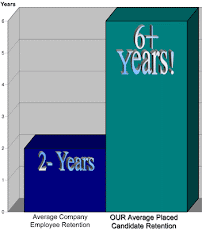
On one leadership extreme is absolute power which, as they taught us in school, corrupts absolutely. On the other extreme are so many checks and balances that decisions and progress come to a screeching halt. Either extreme is a dysfunction that affects more companies than you can imagine. Countries, too.
Just look at the U.S. government. When the president and both houses of congress have the same party affiliation, we end up, well, we end up here. Not to point fingers at either party; we’ve seen this configuration screw things up left and right.
Then, when voters get fed up with partisan legislation, they vote the opposing party into congress and boom, stalemate. Nothing gets done. Yes, there are exceptions, but all too often, this is exactly how it goes.
We’ve all seen companies fall into the same extreme modes. When the board isn’t independent, the CEO can essentially do whatever he wants. Typically, that’s not a good thing. Too much power and not enough checks and balances are a recipe for dysfunctional behavior and potential disaster.
On the flip-side, I’ve actually seen quite a few companies where the CEO couldn’t or, for whatever reason, wouldn’t grow a pair and run the show. Under the guise of autonomous business units, for example, the company gets pulled in multiple directions and, again, stalemate.
This is exactly why a company should never be run like a government … any kind of government. So how should companies be run? How can Boards, CEOs, and management teams avoid either dysfunctional extreme? By following these five rules:
The CEO alone is responsible for developing and communicating vision and strategy, but the process must include the entire management team in a way that fosters open expression of ideas that ultimately leads to consensus. And the board gets to weigh in before everything’s cast in stone.
The management team must be motivated, aligned, and held accountable to achieve the company’s strategic and operating goals. The CEO and head of HR co-manage the process with board oversight. No, it isn’t easy and yes, it can be done. If you can’t figure it out, hire someone who can.
Let VPs run their own show … to a point. The management team is called that for a reason. These are the folks with expertise and maturity to run their own show and that’s what they should do. That said, they often come into conflict with each other. That’s when the CEO needs to make the call without hesitation.
Never, ever have a two-in-a-box or office-of-the-CEO configuration. Two leaders often lead to schizophrenic corporate behavior. It’s simply not a stable configuration. Companies operate most effectively with one person in charge.
Maintain complete transparency to an independent, active board. There should only be one executive on the board of directors, and that’s the CEO. All directors should be active and engaged. And the management team should be completely transparent when communicating with the board.
That’s it. Five rules are all it takes to avoid leadership dysfunction. Don’t get me wrong; that doesn’t mean the company will grow profitably until the end of time. There are a zillion and one failure modes from internal and external factors. But this will at least eliminate the most common leadership dysfunction modes. And make no mistake, they take down more companies than you can imagine. No kidding."
By Steve Tobak | http://www.bnet.com/blog/ceo/how-to-cure-leadership-dysfunction/5542?tag=drawer-container;load-section-river














1 comment:
I have never seen anyone make the point more clear and precisely stated than what is presented here. Having seen companies such as these, I can say this article is right on track.
Great Job
Mark Stine
http://businessparadigms.blogspot.com/2010/09/technical-headhuntercom-resource-for.html
Post a Comment